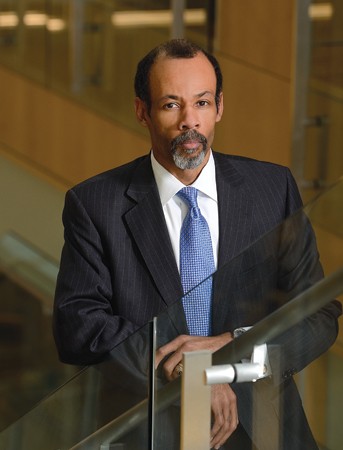1. What's at the top of your to-do list?
We are looking for opportunities to integrate disparate technologies using Physical Security Information Management Systems architecture. By integrating existing assets such as video, intrusion detection, access control, radio communication, and other systems under one unified platform, we can enhance situational awareness and improve customer service.

Image caption: Keith Hill, vice president for corporate security
Image credit: Will Kirk / Johns Hopkins University
2. What keeps you up at night?
With thousands of students, faculty, staff, patients, and visitors arriving and departing from Johns Hopkins facilities every day, I'm always concerned about their safety and ensuring Corporate Security is doing everything it can to provide a secure environment. As first responders, we must be prepared for any number of crisis events, from civil unrest to fire, bomb, and other threats, just to name a few. While each crisis has its own unique characteristics, we prepare for all of these and other events through training and working closely with our counterparts during all phases of a crisis.
3. What's in store 10 years from now?
Now that security for both the university and [Johns Hopkins] Medicine falls under the Corporate Security umbrella, technology advancements have provided a unique opportunity to explore system integration across the institutions that was previously not pursued. By integrating various camera, alarm, and access control systems, we can be better positioned to take advantage of the continued changes in technology the future will bring.
4. Tell me something I don't know about Johns Hopkins.
Over the last five fiscal years, Corporate Security has averaged well over 60,000 calls for assistance annually just here on the East Baltimore campus. These calls include everything from responding to aggressive patients/visitors, heliport responses, code calls, alarms, suspicious packages, escorts, and door openings to even helping find "misplaced/lost vehicles" and much, much more.
Posted in University News







